With the advancement of technology, automated homes, also known as automated homes, are becoming more widespread. However, not everyone is familiar with the concept. automated homes are a product of the Fourth Industrial Revolution, leveraging technology to simplify everyday tasks and enhance comfort. For those considering automating their home, this guide will outline the key functions and benefits of an automated home system.
What is an automated home?
An automated home is equipped with electronic devices that can be controlled, either automatically or semi-automatically, to replace or assist humans in performing various management and control tasks. These devices communicate with users through a control panel installed in the home, mobile apps, tablets, or even web interfaces.
By integrating technologies such as infrared, smartphones, IoT (Internet of Things), and cloud technology, an automated home can help manage daily household tasks automatically. For investors, automated homes are highly desirable due to their ability to enhance living comfort and efficiency.
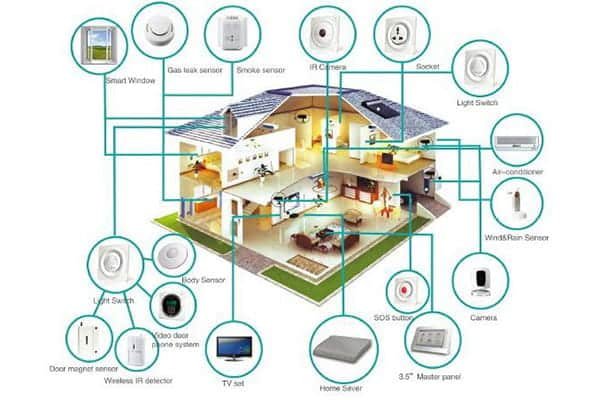
When you create an automated home, you are essentially using technology to make your life more convenient, reducing your workload without making you lazy. In fact, these systems give you more time to relax by taking care of routine tasks, ensuring your home operates smoothly even when you’re not physically there.
A fully automated home is managed through electronic devices that communicate using various protocols like Bluetooth, Zigbee, Z-Wave, Wi-Fi, Matter, and KNX. As the homeowner, you can control these devices through your smartphone or even your voice, ensuring seamless management of your household.
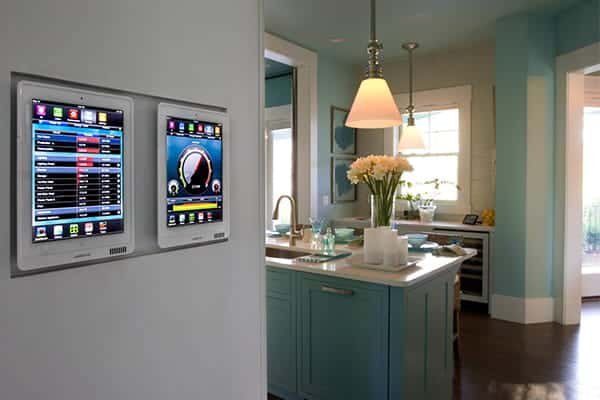
Key Functions of a automated home
Remote Monitoring and Control
One of the most significant advantages of an automated home is the ability to monitor and control what’s happening in your home even when you’re not there. By using a smartphone, tablet, or sometimes a computer, you can keep track of your home’s activities, ensuring safety and comfort. For example, if you have young children at home, you can monitor their movements remotely, providing peace of mind.

Energy Efficiency
Automated homes offer significant energy savings by ensuring that devices are used only when needed. For instance, you no longer have to worry about leaving the air conditioner on when you leave for work. With real-time monitoring of heating, water, and electricity usage, automated homes can drastically reduce energy consumption and prevent costly utility bills.
Smart Lighting Systems
Smart lighting systems are one of the most popular and notable features of any automated home. These systems offer several benefits that simplify and enhance your living experience. Some key features include:
- Remote control: You can turn your lights on or off from your smartphone, no matter where you are, even while on vacation.
- Scheduling: Smart lighting allows you to set timers or schedules for your lights. This eliminates the need to manually switch lights on when it gets dark or off in the morning—they can operate automatically based on your settings.
- Voice control: You can control lights using voice commands through virtual assistants like Google Assistant, Siri, or Amazon Alexa. With a simple command, you can turn all the lights in your home on or off, or adjust the brightness as needed.
- Integration with other smart devices: Smart lighting can be integrated with other smart devices for seamless automation. For instance, the lights can automatically turn on when you open the door or when motion is detected in the hallway, all thanks to smart sensors.
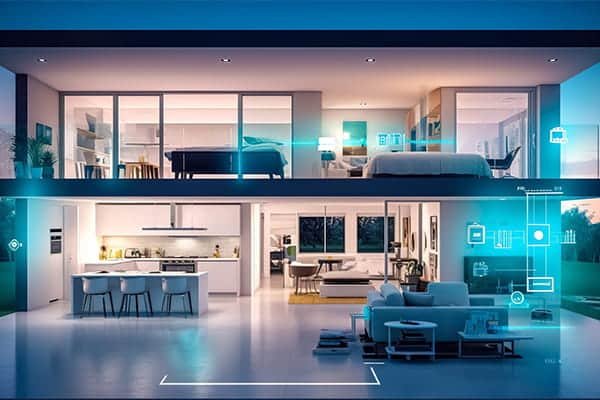
In addition, smart lights like the Philips Hue, which come in 16 million colors, can create immersive lighting experiences while watching movies, playing video games, or hosting a party. These lights can be controlled remotely and have a lifespan of up to 25,000 hours.
===> Learn more: Detailed Information on License Plate Recognition Systems
Home Security
A major selling point of automated homes is the enhanced security they offer. Smart cameras and security devices are designed to keep your home safe, and many of these devices connect directly to your smartphone, allowing you to monitor your home from anywhere in the world.
Unlike traditional security cameras, smart cameras are equipped with advanced features such as motion detection and high-definition (HD) video recording up to 1080p resolution. These cameras often come with infrared night vision, wireless capabilities, and weather resistance, making them versatile for both indoor and outdoor use. Brands like Google and Ring also offer smart doorbells with integrated cameras, allowing you to see and communicate with anyone at your front door.
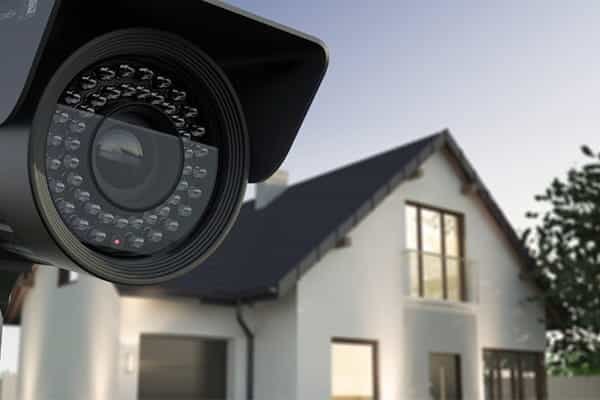
Automated Curtains and Windows
Another convenient feature of an automated home is the ability to control your curtains, windows, and even doors remotely. With a touch of a button, you can open or close blinds, adjust roller shutters, and more. You can also schedule these systems to operate automatically; for instance, you can program the curtains to close at 9 PM and open again at 6 AM.
Voice control is another option, allowing you to open or close curtains using a smart speaker or virtual assistant, adding a layer of convenience to your daily routine.
Voice Control
Perhaps one of the most popular features in automated homes is voice control. This technology allows homeowners to control various aspects of their homes simply by speaking. Whether it’s turning on the lights, adjusting the thermostat, or activating the security system, voice commands make managing a home incredibly simple and intuitive.
Virtual assistants like Siri, Google Assistant, and Amazon Alexa have revolutionized the way homeowners interact with their automated home systems. These assistants allow you to control all your smart devices from a single interface, regardless of your location. Whether you’re on a business trip or vacation, your virtual assistant can help you manage everything from lighting to security systems.
Smart Climate Control
Smart climate control systems ensure that your home’s temperature is always just right without any manual intervention. Even older HVAC systems can be upgraded to smarter versions without complex installations.
With the help of a wireless infrared device, you can control your air conditioner from your phone. Smart climate control systems offer a variety of useful features, such as:
- Remote control: You can turn your air conditioner or fan on or off from your smartphone, even when you’re not at home.
- Real-time status updates: Monitor the status and temperature of your home’s HVAC system in real-time, ensuring optimal comfort levels.
- Automated temperature adjustments: Smart systems can automatically adjust the temperature based on real-time conditions. For instance, the air conditioner can turn on when it gets too hot or the heating system can increase the temperature when it’s cold, all thanks to temperature sensors.
- Voice control: These systems can also be controlled via voice commands using Google Assistant, Amazon Alexa, or Siri.
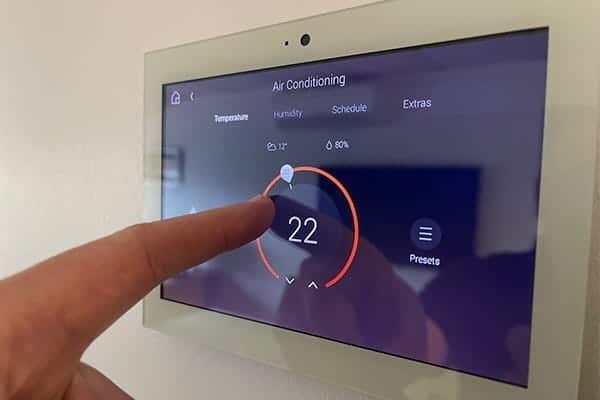
Popular smart climate control devices include brands like Broadlink, Tuya, and Sensibo Sky, which are readily available in the market and easy to install.
The integration of automated home systems offers countless benefits that not only enhance convenience but also improve energy efficiency, security, and overall home management. Whether it’s controlling your lights, monitoring your security system, managing your curtains, or optimizing your home’s temperature, an automated home makes it possible to manage everything effortlessly from a smartphone or with simple voice commands.
As technology continues to evolve, automated homes are expected to become even more advanced, providing greater customization and personalization. If you’re interested in turning your home into an automated home, now is the perfect time to explore the possibilities and take advantage of the many functions and features that can make your life easier. NT Security is ready to help you design and install the perfect automated home system tailored to your needs.

